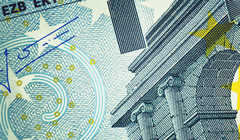 The European Central Bank’s move from Zirp to Nirp (from zero to negative interest rate policy) is designed to spur banks to pull their excess reserves out of the central bank and put them to work in the markets. That sounds reasonable, if somewhat desperate. But Fitch says that it could simply cause European banks to move their excess reserves to the US Federal Reserve through their local branches in the US.
The European Central Bank’s move from Zirp to Nirp (from zero to negative interest rate policy) is designed to spur banks to pull their excess reserves out of the central bank and put them to work in the markets. That sounds reasonable, if somewhat desperate. But Fitch says that it could simply cause European banks to move their excess reserves to the US Federal Reserve through their local branches in the US.
The ECB announced last week that it would pay negative 10 basis points on reserves – meaning that banks would have to pay to hold money at the central bank. The Fed, meanwhile, pays 25 basis points on required and excess reserves.
It’s not a clean transfer from ECB to Fed, though. Fitch notes that European banks need to swap euros to dollars, and the swap carries a capital charge. Nonetheless, there will still be some advantage, even taking into consideration the cost of the swap, Fitch notes.
The rating company writes, in a recent note, “As of the end of April 2014, about 50 percent of the total $2.6 trillion of excess reserves held at the Fed was from foreign banks.” That figure is well above the $135 billion of required reserves.
Corporates looking for opportunities to fund themselves in deflation-fighting jurisdictions like the Eurozone should perhaps wait a bit to see how banks actually react to the ECB’s move. If Fitch is right, the increase in liquidity might not be what Eurozone regulators are hoping for.